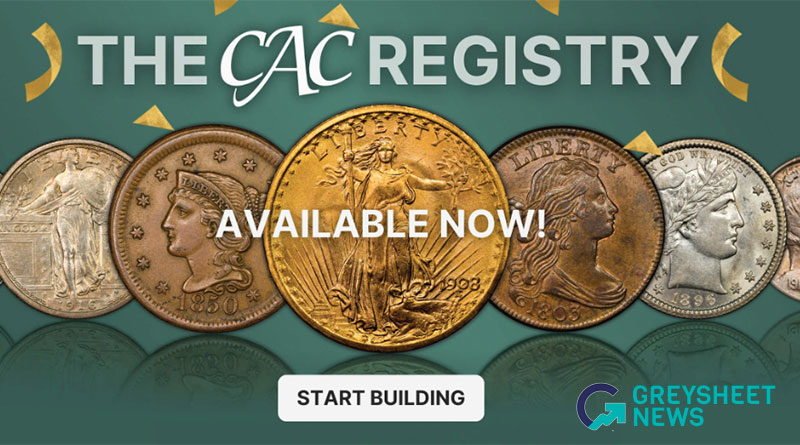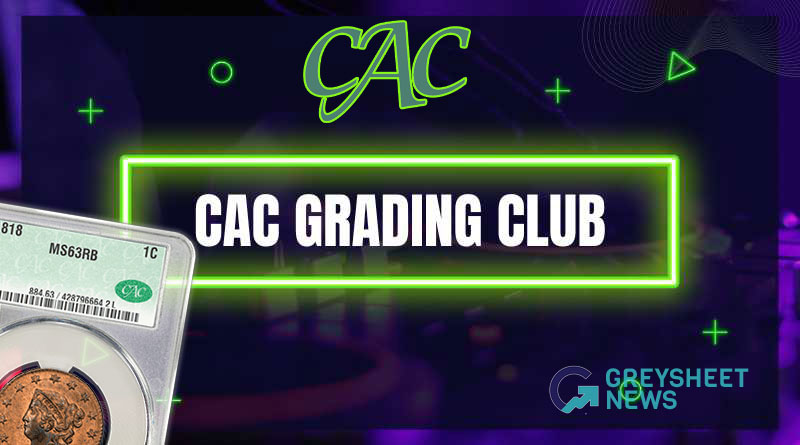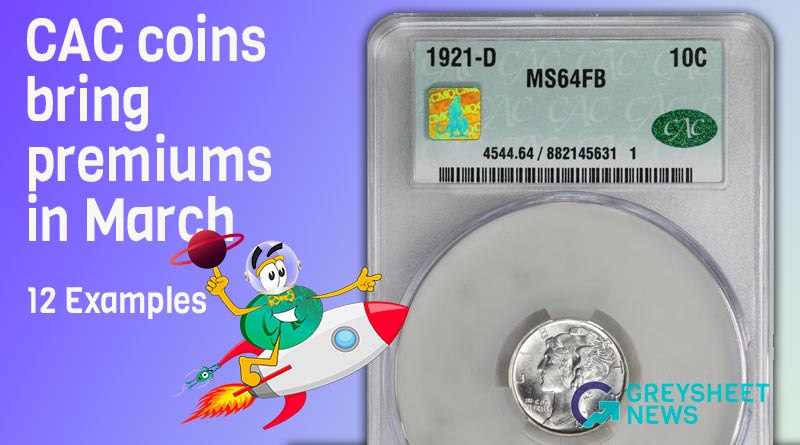CAC Coins Bring Premiums in Auctions in June 2018
Certified coins boasting bean-shaped labels of approval by Certified Acceptance Corporation (CAC) are popular with coin collectors and coin dealers, and they generally trade at higher levels than similarly graded and slabbed coins without CAC’s widely known green and gold stickers, which denote coins of superior quality for their labeled grade. CAC-approved coins continue to tend to realize higher prices at auction than their non-CAC counterparts.
Here are 10 examples among many that could be listed:
1. On June 11, the Goldbergs auctioned a PCGS-graded MS64 1892-O quarter, with a CAC sticker, for $780. Earlier in 2018, Heritage has publicly sold four PCGS-graded MS64 1892-O quarters, without CAC stickers. The two sold on May 9 realized $480 and $408, respectively. These same two coins each sold for $424.80 in February. In December 2017, Bonham’s auctioned an MS64 1892-O quarter in an early PCGS holder for $585. Whether coins are in old holders or new holders, CAC-approved coins tend to bring more in public sales!
2. Five PCGS-graded AU58 ‘No Motto’ 1907 $10 gold coins were auctioned in June. Only one was CAC approved, which the Goldbergs sold for $1,080 on June 11. Six days later, Heritage sold two, without CAC stickers, in consecutive lots, for $810 and $780, respectively. On June 26, Stack’s-Bowers also sold two PCGS graded AU58 ‘No Motto’ 1907 $10 gold coins in consecutive lots, each for the same price, $720. So, the CAC-approved, MS64 coin of this date and variety brought at least one-third more than any of the others sold in June.
3. On June 14, at a Long Beach Expo, a CAC-approved MS64 1836 Classic Head $5 gold coin realized $25,201.20. In April, a PCGS-graded MS64+ coin, also of the “Second Head, Large Date” variety, though without a CAC sticker, realized $23,400. In August 2016, this same auction firm sold another PCGS graded MS64+ “Second Head, Large Date” 1836 $5 gold coin, without a CAC sticker, for $21,150. Also in August 2016, at the same convention in Anaheim, a different auction firm sold a PCGS-graded MS64 “Second Head, Large Date” 1836 $5 gold coin, without a CAC sticker, for $16,450. The CAC-approved MS64 coin brought significantly more than each of the non-CAC, MS64 or even 64+ 1836 half eagles of the same variety.
4. On June 14, a CAC-approved MS66 grade 1911-S $10 gold coin was auctioned by Heritage for $66,000. In August 2016, the same auction firm sold a PCGS-graded MS66 1911-S, without a CAC sticker, for $32,900 — less than half as much!
5. A CAC-approved MS65 1923-S with a “Red” color designation was auctioned for $66,000 on June 14. On March 22, a PCGS-graded 1923-S, without a CAC sticker, brought $28,800 in a major auction in Baltimore of a famous collection of Lincoln cents.
6. A CAC-approved MS65 1875-CC twenty cent piece brought $19,200 on June 14. In January 2018, a different CAC-approved MS65 1875-CC twenty cent piece was auctioned for $17,037.50. The same coin that was auctioned in January, in the same old PCGS holder but without a CAC sticker, realized $8,812.50 in June 2017. Another PCGS-graded MS65 1875-CC, without a CAC sticker, was auctioned by Heritage for this price, $8,812.50, in March 2016.
7. On June 14, an NGC-graded MS66 1858 “Large Letters” Flying Eagle cent, with a CAC sticker, realized $9,001.20. In January 2018, the same auction firm sold a PCGS-graded MS66 1858 “Large Letters” Flying Eagle cent, without a CAC sticker, for $6,600. In March 2017, Stack’s-Bowers auctioned an NGC-graded MS66 1858 “Large Letters” Flying Eagle cent, without a CAC sticker, for $6,462.50. In February 2017, Heritage sold a PCGS-graded MS66 1858 “Large Letters” Flying Eagle cent, without a CAC sticker, for $7,050. Clearly, the CAC-approved, NGC-graded coin brought substantially more than three different non-CAC coins did over the past 18 months.
8. On June 14, a CAC-approved MS63 1883 Hawaii silver dollar brought $7,800. Seconds earlier, a PCGS-graded MS63 1883 Hawaii silver dollar, without a CAC sticker, realized $4,860!
9. On June 21, Stack’s-Bowers auctioned a CAC-approved AU55 1872-CC $20 gold coin for $33,600. In March 2017, Stack’s-Bowers auctioned a PCGS AU55 1872-CC $20 gold coin, without a CAC sticker, for $18,800. In February 2016, Heritage auctioned a different PCGS AU55 1872-CC $20 gold coin, without a CAC sticker, for the same price — $18,800.
10. On June 21, Stack’s-Bowers auctioned a CAC-approved AU58 1801 half dime for $18,600. In August 2017, Heritage auctioned a non-CAC, PCGS-graded AU58 half dime that was struck from the same pair of dies, for $13,512.50.

Download the Greysheet app for access to pricing, news, events and your subscriptions.
Source: CAC Grading
CAC was formed in 2007 by John Albanese, a respected authority on coin grading and the rare coin market, along with twenty-two leading members of the numismatic community. Because certified coins of the same grade can be of varying quality, CAC’s mission was to advocate for the hobbyist by establishing an extremely stringent standard of grading. As a verifier of previously certified coins, CAC only recognizes coins that meet the highest standard with the now famous green sticker. Out of all the coins submitted to CAC, less than half receive the honorable CAC sticker. As a result, the CAC sticker serves as an unmistakable means of identifying premium coins for the grade.
In 2022, John Albanese assembled over one hundred and fifty leading members of the numismatic community with a purpose to reclaim accuracy and consistency in grading. After all, why merely sticker a previously certified coin when the same stringent standards can be applied within the context of a grading service? Thus, CAC Grading was born! The only difference now is the grade assigned to a coin is a true representation of that coin. Boasting a team of world-class graders including Ron Drzewucki, John Butler, among others, CAC is committed to applying an unparalleled level of expertise to every submitted coin. As a result, hobbyists can have total confidence in a coin certified by CAC.











